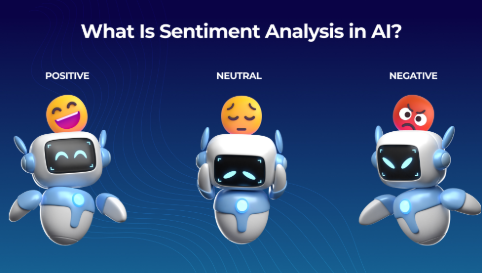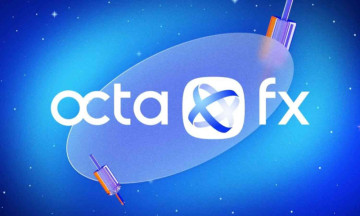"The one thing I can almost promise you is that oil will sell for a lot more someday". —Warren Buffett
Crude oil trading is a cornerstone of the global financial system, influencing economies, industries, and consumers worldwide. As a highly liquid and volatile commodity, crude oil offers traders numerous opportunities for profit, but it also presents significant risks. Understanding the intricacies of crude oil trading requires a comprehensive grasp of market dynamics, geopolitical factors, trading strategies, and future market forecasts and Oil Profit is not easy to make. But with tech and AI it might just be within your reach.
These technologies make the process of trading more efficient and faster than ever before. Consider quantum AI; it is a technology that helps one forecast market trends, analyse massive datasets, and enhance trading strategies. Other technologies are similar but can also be used to access an extraordinary amount of market information. Modern technologies like Artificial Intelligence (AI) are transforming trading practices. Systems like data analytics and machine learning algorithms help with analysing large amounts of market data in real time while also recognising trends and patterns that were invisible before.
Lets undestand this first - How is Crude Oil traded?
Crude oil is traded primarily through two benchmark varieties: West Texas Intermediate (WTI) and Brent Crude. WTI originates from U.S. oil fields, particularly in Texas, and is known for its light and sweet characteristics due to low sulfur content. Brent Crude, extracted from fields in the North Sea, serves as a major benchmark for international oil prices. The choice between trading WTI and Brent depends on factors such as market focus, regional demand, and pricing considerations.
And tech helps you right there. Technology today can help you with predicting market movements based on news sentiment, historical data, and social media trends as well. The technologies that have automated trading systems help with executing trades faster which increases profitability. Technology helps process a large number of datasets to access hidden insights which allow you to make accurate decisions. They further lead to emotion-free trading. They help make more rational investment decisions without getting any emotional bias involved. AI evaluates market volatility and adjust strategies accordingly. So, this helps with getting a better return while also minimising any possible loss.

Factors Influencing Crude Oil Prices
Several key factors influence crude oil prices:
-
Supply and Demand Dynamics: Global production levels, consumption rates, and inventory balances play pivotal roles in price determination. For instance, increased production in non-OPEC countries like the United States, Canada, Guyana, and Brazil is projected to add 1 million barrels per day in 2025, potentially leading to downward pressure on prices. The traditional algorithms may not be the best choice to evaluate the vastness of global markets. But quantum AI optimises strategies and portfolio in real-time while also considering all the different variables that will help to make better decisions.
-
Geopolitical Events: Political instability, conflicts, and policy decisions can disrupt supply chains, causing price volatility. Recent drone attacks on oil infrastructure, such as the one affecting Kazakhstan's exports, exemplify how geopolitical tensions can lead to supply disruptions and price fluctuations. Quantum AI helps to find patterns in multi-dimensional and large data sets. It allows to make better predictions about the markets while maximising returns and reducing risks.
-
Economic Indicators: Economic growth rates, industrial activity, and currency strength influence oil demand. A robust economy typically correlates with higher energy consumption, driving up prices. Quantum AI also has the capability to process various risk factors at once. This way, it offers a holistic view of the pitfalls and allows you to make proactive adjustments in your trading strategy.
-
OPEC+ Decisions: The Organization of the Petroleum Exporting Countries (OPEC) and its allies, collectively known as OPEC+, manage production levels to stabilize markets. Deliberations on adjusting output caps, especially during periods of demand uncertainty, significantly impact prices. Several organisations are making Quantum AI-powered platforms that can help in decision-making. These platforms combine quantum computing’s speed with AI’s recognition abilities to provide actionable insights.
-
Technological Advancements: Improvements in extraction and production technologies can alter supply dynamics, affecting prices. AI-based sentiment analysis helps with understanding the market and identifying lucrative trading opportunities. One can keep an eye on emerging sectors, and economic developments with this technology while also pinpointing price movements and undervalued assets.
Crude Oil Trading Strategies
AI- based sentiment analysis serves as a powerful tool for predictive analytics. It helps traders base their decisions on historical sentimental data. One can predict future trends in trading and adapt strategies accordingly. Successful crude oil trading involves employing various strategies tailored to market conditions and individual risk tolerance:
-
Swing Trading: This strategy involves capitalizing on short- to medium-term price movements, holding positions from several days to weeks. Traders analyze market trends, technical indicators, and price patterns to identify entry and exit points. Sentiment analysis is useful for getting qualitative insights and combining them with data to make a better trading strategy.
-
Spread Trading: Traders simultaneously buy and sell related oil contracts to profit from price differentials. This can involve calendar spreads (different contract months) or inter-market spreads (WTI vs. Brent). The AI-based sentiment analysis can help identify upcoming events or circumstances that might affect the price. Using the evaluation, traders can react proactively and align trades accordingly.
-
Mean Reversion: This approach is based on the premise that prices will revert to their historical averages. Traders identify overbought or oversold conditions to enter counter-trend positions, anticipating a return to mean prices. AI works 24/7 without needing intervention. They can handle several transactions and strategies at once to give the best returns possible.
-
Breakout Trading: Traders enter positions when prices break through established support or resistance levels, expecting continued momentum in the breakout direction. AI aligns with investment goals and risk tolerance. They assess market volatility to take measured steps and meet trader objectives while maintaining their risk profile.
-
Volatility Trading: Given oil's price fluctuations, traders may use options or other derivatives to profit from anticipated volatility changes, regardless of price direction.
Market Forecasts and Future Outlook
Accurate market forecasting is crucial for informed trading decisions. Various organizations provide insights into future oil price trends:
-
U.S. Energy Information Administration (EIA): The EIA projects that Brent crude oil prices will average $74 per barrel in 2025, declining to $66 per barrel in 2026. This forecast considers increased global production and slower demand growth as key factors influencing the downward price trend.
-
International Energy Agency (IEA): The IEA anticipates global oil demand to reach 104 million barrels per day by 2025, with growth driven by non-OECD economies. However, supply growth, particularly from non-OPEC+ countries, may outpace demand, contributing to market oversupply and potential price declines.
-
Goldman Sachs: Analysts highlight that market expectations for a significant surplus in oil production by 2025 may have contributed to recent price declines. Geopolitical developments, such as negotiations between the U.S. and Russia, could further influence market dynamics and price trajectories.

Practical Steps for Aspiring Crude Oil Traders
Technology is changing the trading world and as new systems get introduced in the market, one must become accustomed to it. Using such technologies, one can trade with any financial asset. One can make the entire process easier and have some of the best strategies backing returns using quantum AI and the rest. For those interested in entering the crude oil trading arena, consider the following steps:
-
Educate Yourself: Gain a thorough understanding of what moves crude oil prices, including geopolitical events, supply-demand dynamics, and economic indicators.
-
Analyze Market Trends: Utilize technical analysis tools to interpret long-term charts and identify patterns that may indicate future price movements. The AI sentiment analysis is also called opinion mining. It is an advanced technology that automates data analysis to determine the given emotional or sentimental tone. This technology uses a combination of natural language processing and artificial intelligence to analyse and understand the opinions, information, and emotions conveyed in anything. Use it where it may be.
-
Choose the Right Trading Instrument: Decide between trading futures, options, or other derivatives based on your risk tolerance and investment goals. AI trading platforms help create successful trading strategies that are effective and also automated. They lead to high returns once one starts using them to monitor the performance of one's investments and to also implement risk management strategies.
-
Develop a Trading Plan: Establish clear entry and exit points, risk management strategies, and profit targets to guide your trading decisions. The algorithm intelligence of AI automates and combines multiple trading strategies to analyse and pick the best approach for current market conditions. It adapts to changing trends and shifts its strategies to optimise performance in different trading pairs.
-
Stay Informed: Keep abreast of global news, OPEC+ announcements, and economic reports that could impact oil markets.
Crude oil trading offers substantial profit opportunities but requires a deep understanding of market forces, strategic planning, and continuous education. By staying informed about global developments.
Note: This article is for informational purposes only and does not constitute financial advice. Investors should conduct their research or consult with a financial advisor before making investment decisions.
Disclaimer
Trading carries inherent financial risks, including the potential for significant losses. Historical data indicates that a substantial percentage of traders experience financial downturns. Names such as "AI Trading" mentioned on our site are fictitious and used solely for marketing purposes. Testimonials and featured media may include actors and are intended for promotional use only. Before engaging with any trading platform, we strongly advise reviewing its terms, conditions, and disclaimers. Additionally, ensure compliance with tax obligations related to capital gains in your jurisdiction, such as CFTC regulations in the US. In regions like the UK, financial regulations, including FCA Policy Statement PS20/10, impose restrictions on certain marketing practices for CFDs. Adhering to local financial laws is essential. By submitting your details, you agree to their use by third parties as outlined in our Privacy Policy and Terms and Conditions. Whether you trade independently, use automated trading software, or consult professional brokers, make informed decisions that align with your financial strategy.
Vygr News & Vygr Media Private Limited and its authors are not responsible for your actions and decisions on your trading activities.
© Copyright 2024. All Rights Reserved Powered by Vygr Media.

























